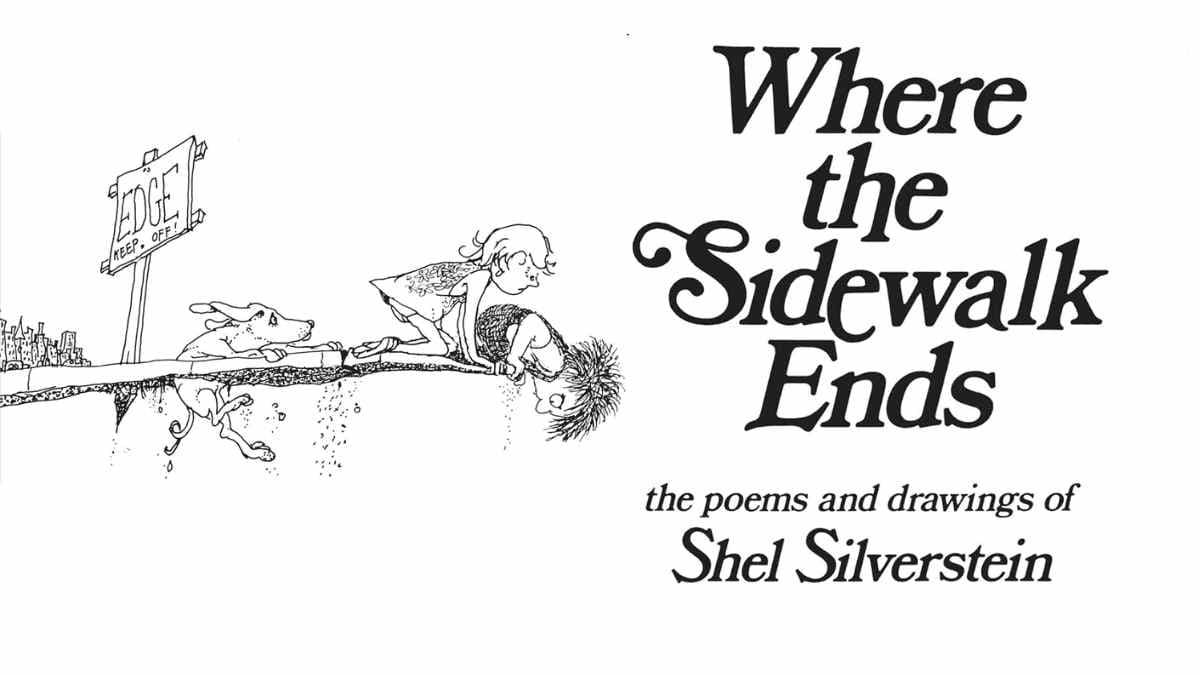Where the Sidewalk Ends

Introduction to Where the Sidewalk Ends Poem
One of the favorite poems for children is “Where the Sidewalk Ends”, written by author Shel Silverstein. The poem is featured in his book of the same name published in 1974.
The poem talks about a place where simple things stop happening and extraordinary things begin. The poem appeals to both children and grown-ups because of its simple language and clear illustrations, ensuring its lasting place in storytelling.
Where the Sidewalk Ends Kids For Poem
There is a place where the sidewalk ends
And before the street begins,
And there the grass grows soft and white,
And there the sun burns crimson bright,
And there the moon-bird rests from his flight
To cool in the peppermint wind.
Let us leave this place where the smoke blows black
And the dark street winds and bends.
Past the pits where the asphalt flowers grow
We shall walk with a walk that is measured and slow,
And watch where the chalk-white arrows go
To the place where the sidewalk ends.
Yes we'll walk with a walk that is measured and slow,
And we'll go where the chalk-white arrows go,
For the children, they mark, and the children, they know
The place where the sidewalk ends.
FAQ About “Where the Sidewalk Ends” Kids For Poem
1. Who wrote "Where the Sidewalk Ends"?
-
The poem was written by Shel Silverstein.
2. When was "Where the Sidewalk Ends" published?
-
The poem was first published in 1974.
3. What is the main theme of the poem?
-
The poem explores the theme of escaping from the harshness of reality to a more whimsical and peaceful place.
4. What kind of imagery is used in the poem?
-
The poem uses vivid imagery such as soft white grass, crimson bright sun, and peppermint wind to create a magical and inviting world.
5. Why is "Where the Sidewalk Ends" popular with children?
-
Its simple language, imaginative scenes, and relatable themes make it engaging and easy for children to enjoy and understand.
6. What does the place where the sidewalk ends symbolize?
-
It symbolizes a place of innocence, creativity, and freedom away from the constraints and darkness of the real world.
7. How does the poem describe the journey to this magical place?
-
The journey is described as a walk that is "measured and slow," following chalk-white arrows to a peaceful and inviting destination.
8. What message does the poem convey about childhood?
-
The poem suggests that children have a natural ability to see and understand magical places that adults might overlook, emphasizing the importance of preserving childlike wonder and imagination.
Other Related Sections
NCERT Solutions | Sample Papers | CBSE SYLLABUS| Calculators | Converters | Stories For Kids | Poems for kids| Learning Concepts I Practice Worksheets I Formulas | Blogs | Parent Resource
Admissions Open for
More Poems
Admissions Open for
More Poems
Popular Searches
- NCERT Solutions for Class 1 subjects
- NCERT Solutions for Class 2 subjects
- NCERT Solutions for Class 3 subjects
- NCERT Solutions for Class 4 subjects
- NCERT Solutions for Class 5 subjects
- CBSE School In Aurangabad
- CBSE Schools In Bangalore
- CBSE School In Bhopal
- CBSE Schools In Chennai
- CBSE Schools In Delhi
- Best CBSE Schools In Gurgaon
- CBSE School In Hyderabad
- CBSE School In Indore
- CBSE School In Jabalpur
- CBSE Schools In Jaipur
- CBSE Schools In Kolkata
- CBSE Schools In Mumbai
- CBSE Schools In Nagpur
- CBSE Schools In Pune
- Top CBSE School In Rohtak
- Best CBSE Schools In Sonipat











